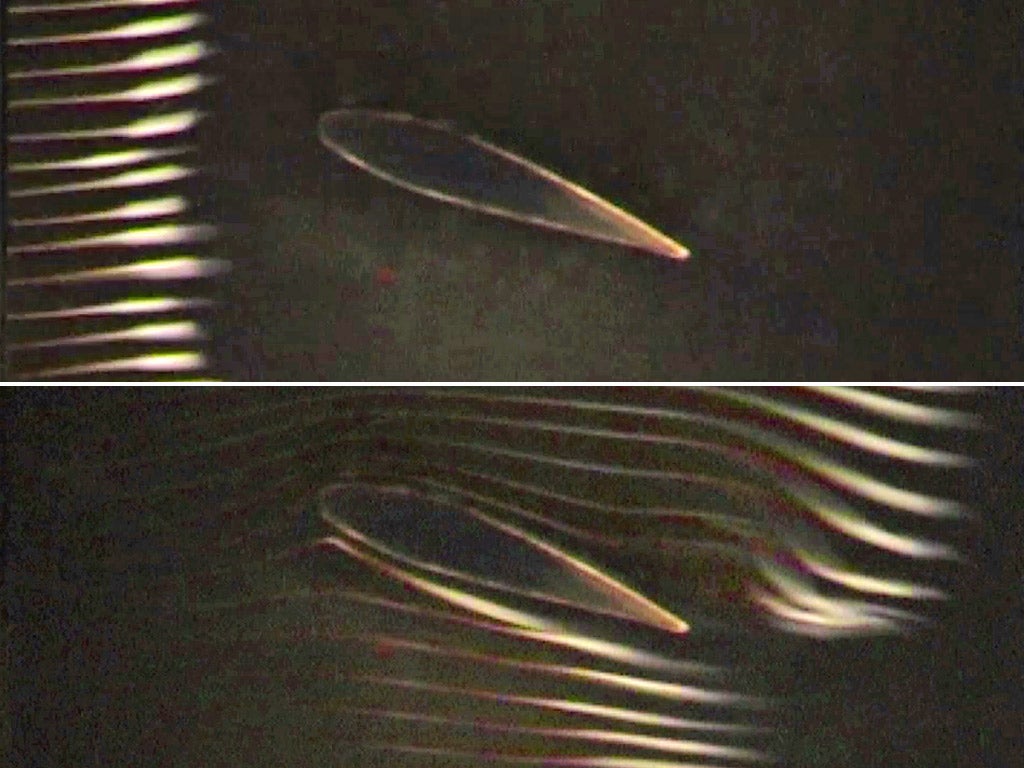The plane truth: Scientist reveals how wings really work

The classic explanation of how a wing generates enough lift to keep a plane or a bird in the air is wrong, according to a Cambridge University physicist.
Many textbooks and aircraft manuals say that a wing produces lift because air travelling over the curved topside of a wing has to travel further than wind flowing around the flat underside and so has to travel faster to keep up, generating lift. But this standard explanation has been shown to be wrong by a simple experiment where a wing is placed in an air tunnel with jets of smoke flowing over the upper and lower surfaces, said Professor Holger Babinsky.
"A wing lifts when the air pressure above it is lowered. It's often said this happens because the airflow moving over the top, curved surface has a longer distance to travel and needs to go faster to have the same transit time as the air travelling along the lower, flat surface," he said.
"But this is wrong," said Professor Babinsky. "In the worst case, [this explanation] can lead to a fundamental misunderstanding of aerodynamics.".
A video of the experiment carried out at Cambridge shows that air does indeed move faster over the upper, curved surface of a wing, but this is because of the curvature of the upper surface. The air does not move faster in order to "catch up" with the air moving over the relatively shorter distance of the lower wing surface, Professor Babinsky said.
The slow-motion video of the smoke jets shows that the air moving over the upper surface of the wing travels further in the same amount of time than wind flowing past the lower surface. In other words there is no "equal transit time" between the upper and lower surfaces, as demanded by the classic explanation.
"What actually causes lift is introducing a shape into the airflow, which curves the streamlines and introduces pressure changes – lower pressure on the upper surface and higher pressure on the lower surface," Professor Babinsky said.
Join our commenting forum
Join thought-provoking conversations, follow other Independent readers and see their replies
Comments
Bookmark popover
Removed from bookmarks